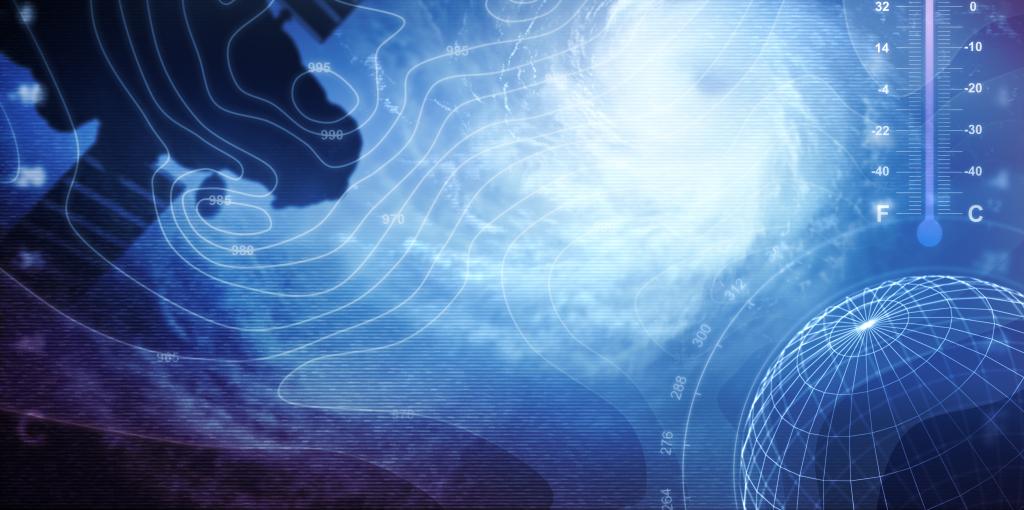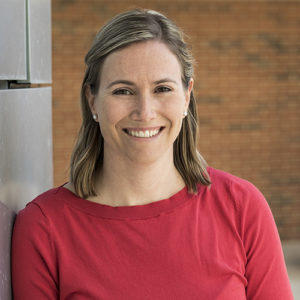Admission CTAs
Mason Scientist receives NSF Career Award for Climate Change Research
George Mason University College of Science assistant professor Natalie Burls recently received the prestigious National Science Foundation Career Award to research one of the grand challenges in climate science—establishing just how much our planet will warm due to high atmospheric CO2 concentrations.
Burls and her research team will make use of climate models, and data containing climate information from past warm periods in Earth’s history, to understand the fundamental physical mechanisms that have controlled tropical climate and how it responds to warming. The goal is to establish confidence in the ability of climate models to capture tropical feedbacks under future global warming.
Our Earth has a long history that can inform us when it comes to understanding how the atmosphere, ocean and land will respond to the current, human-induced and extremely rapid, atmospheric CO2 increase. The world’s societies are largely powered by extracting energy from the sun stored over millions of years in the chemical bonds of coal, oil and gas, a process that releases CO2 to the atmosphere. As a result, CO2 concentration are the highest that they have been in at least the last one million years.
“Over the past 400 million years, we see a strong relationship between periods of high CO2 and temperature with some particularly warm periods that are rather interesting to study and model,” shared Burls. “This NSF award opens the door to pursuing a number of fascinating fundamental research questions surrounding the role that clouds have played in shaping the response of past climates to CO2 and informing our predictions of future climate change.”
When evaluating and modeling the response of Earth’s climate to anthropogenic greenhouse gas emissions, Equilibrium Climate Sensitivity is a central concept within climate science. Equilibrium Climate Sensitivity refers to the average surface temperature change of the planet in response to a change in external forcing (typically a doubling of atmospheric CO2 concentrations) once the climate system has reached a steady state.
Extensive research has revealed three main obstacles in determining Earth’s climate sensitivity: the model, time and state dependence of climate feedbacks, all primarily due to the varying cloud feedback strengths. The limited timespan of the instrumental record makes it difficult to tease out natural, decadal-plus variability from cloud feedbacks due to greenhouse gas induced warming, with signals further complicated by 20th century aerosol forcing. Studying and simulating past warm climates offers an avenue towards constraining the nature of cloud feedbacks under warming, but this approach similarly comes with its limitations.
Burls’ research aims to push past several of these limitations by collectively simulating the tropical cloud radiative forcing and feedback strengths required to simulate three very different past warm intervals. This multi-warm-climate approach will help establish the extent to which robust tropical cloud feedback mechanisms can consistently explain the patterns of warming, and the hydrological cycle response, seen across the 20th century, Pliocene, Miocene and Eocene.
“We encourage our Mason scientists to create and disseminate new knowledge for the betterment of society at home and around the world.” explained Ali Andalibi, Mason College of Science Associate Dean for Research. “Burls’ research has a broader societal impact –to understand the fundamental physical mechanisms that have controlled tropical climate and how it responds to warming.”
It is of significant practical value in establishing confidence in the ability of climate models to capture tropical feedbacks under future warming. The research objectives will integrate the latest scientific advances within both the climate modeling and paleoclimate reconstruction communities to: 1) address a fundamental gap in our understanding of the tropical feedbacks needed to simulate distinct past warm climates and the extent to which they are consistent across warm periods, and 2) test the robustness of climate mechanisms put forth within the paleoclimate community to aid in the interpretation and design of climate reconstructions.
Recently recognized as a George Mason University Teacher of Distinction, “Natalie Burls continually strives to build a collaborative and inclusive science community for both students and faculty.” offered James Kinter, chair of Mason’s highly regarded Atmospheric, Oceanic and Earth Sciences Department in the College of Science. In addition to her important climate science research, this NSF funding will also support Burls’ mentoring of both national and local undergraduate and high school students through George Mason’s Aspiring Scientists Summer Internship Program; and her presenting a “weather and climate” module at Mason’s FOCUS summer camp designed for females underrepresented in fields of science, technology, engineering, and mathematics.

